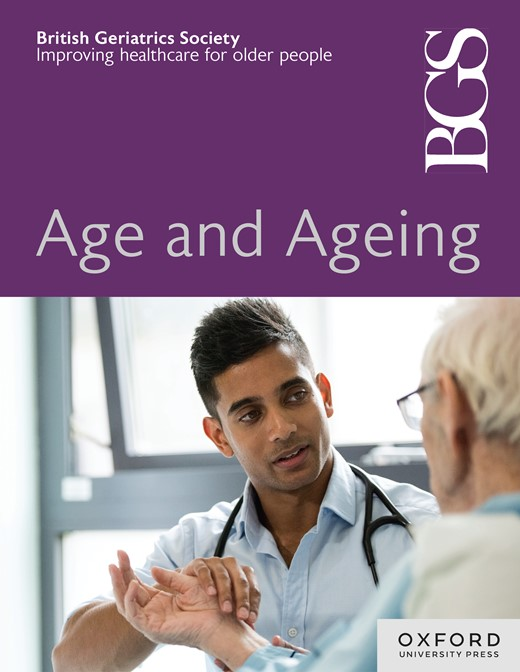3173标准化的入院形式改善了以病人为中心的护理,缩短了住院时间
IF 6
2区 医学
Q1 GERIATRICS & GERONTOLOGY
引用次数: 0
摘要
我区综合医院采用非选择性医疗接收模式,普通住院人员经常错过对综合老年评估(CGA)至关重要的重要信息。最近的苏格兰医疗保健改善指南概述了住进急性医院的虚弱患者有不良后果的风险。我们的老年医学(MOE)病房的标准化入院形式(入院需要临床虚弱评分超过5分)将确保关键信息得到整理,以更有效地进行CGA,决策和出院计划。我们的目标是到2024年11月,我们急诊病房90%的住院病人都有完整的入院形式记录。方法通过对非专利病历资料的分析,找出易被遗漏的升级状态、用药回顾和出院计划目标等关键项目。我们创建了标准化的MOE入院形式,这是试点(第1周期),然后纳入电子病历(第2周期)。结果测量是MOE患者完整入院形式的百分比。我们还审查了平均住院时间数据,并寻求病房工作人员的反馈。结果基线数据显示,57.2%的MOE患者在入院时记录了关键的CGA信息。周期一(2024年7月)上升到74.1%,而周期二(2024年11月)上升到90.8%。平均住院时间从12.8天减少到9.6天,减少了25%。用户对标准化形式表的反馈普遍是积极的。结论该形式表通过确保药物协调、提高临床文献的全面性和简化多学科团队评估,为MOE患者初始评估建立了标准化的以患者为中心的方法,以提供有效的连续性护理和出院计划。这得到了用户的好评,并导致患者早日回家。此表格将于4个月后重新审核,并适用于其他MOE病房。本文章由计算机程序翻译,如有差异,请以英文原文为准。
3173 Standardised admissions proforma improves patient-focused care and reduces length of stay
Introduction Our district general hospital utilises an unselected medical receiving model where generic admission clerk-ins often miss salient information vital for comprehensive geriatric assessment (CGA). Recent Healthcare Improvement Scotland guidelines outlined people living with frailty that are admitted to an acute hospital are at risk of adverse outcomes. A standardised proforma for admissions to our medicine of the elderly (MOE) ward (clinical frailty score over five required for admission) would ensure critical information was collated for more effective CGA, decision making and discharge planning. The aim was by November 2024, 90% of inpatients within our acute MOE ward would have had complete admission proformas documented. Method We analysed information from generic medical admission notes and identified key items often omitted such as escalation status, medication review and discharge planning goals. We created a standardised MOE admission proforma which was piloted (cycle 1) and then incorporated into the electronic patient record (cycle 2). The outcome measure was the percentage of MOE patients with complete admission proformas. We also reviewed average length of stay data and sought feedback from ward staff. Results Baseline data revealed 57.2% of MOE patients had key CGA information documented on admission. Cycle one (July 2024) illustrated an increase to 74.1% meanwhile cycle two (November 2024) increased to 90.8%. There was a 25% reduction in average length of stay from 12.8 days to 9.6 days. Feedback from users of the standardised proforma was universally positive. Conclusion This proforma established a standardised patient-centred methodology for initial MOE patient assessment by ensuring medication reconciliation, improved comprehensiveness of clinical documentation and streamlining multidisciplinary team assessment to provide effective continuity of care and discharge planning. This was well received by users and resulted in patients returning home sooner. This proforma will be re-audited in 4 months and applied to other MOE wards.
求助全文
通过发布文献求助,成功后即可免费获取论文全文。
去求助
来源期刊

Age and ageing
医学-老年医学
CiteScore
9.20
自引率
6.00%
发文量
796
审稿时长
4-8 weeks
期刊介绍:
Age and Ageing is an international journal publishing refereed original articles and commissioned reviews on geriatric medicine and gerontology. Its range includes research on ageing and clinical, epidemiological, and psychological aspects of later life.
 求助内容:
求助内容: 应助结果提醒方式:
应助结果提醒方式:


